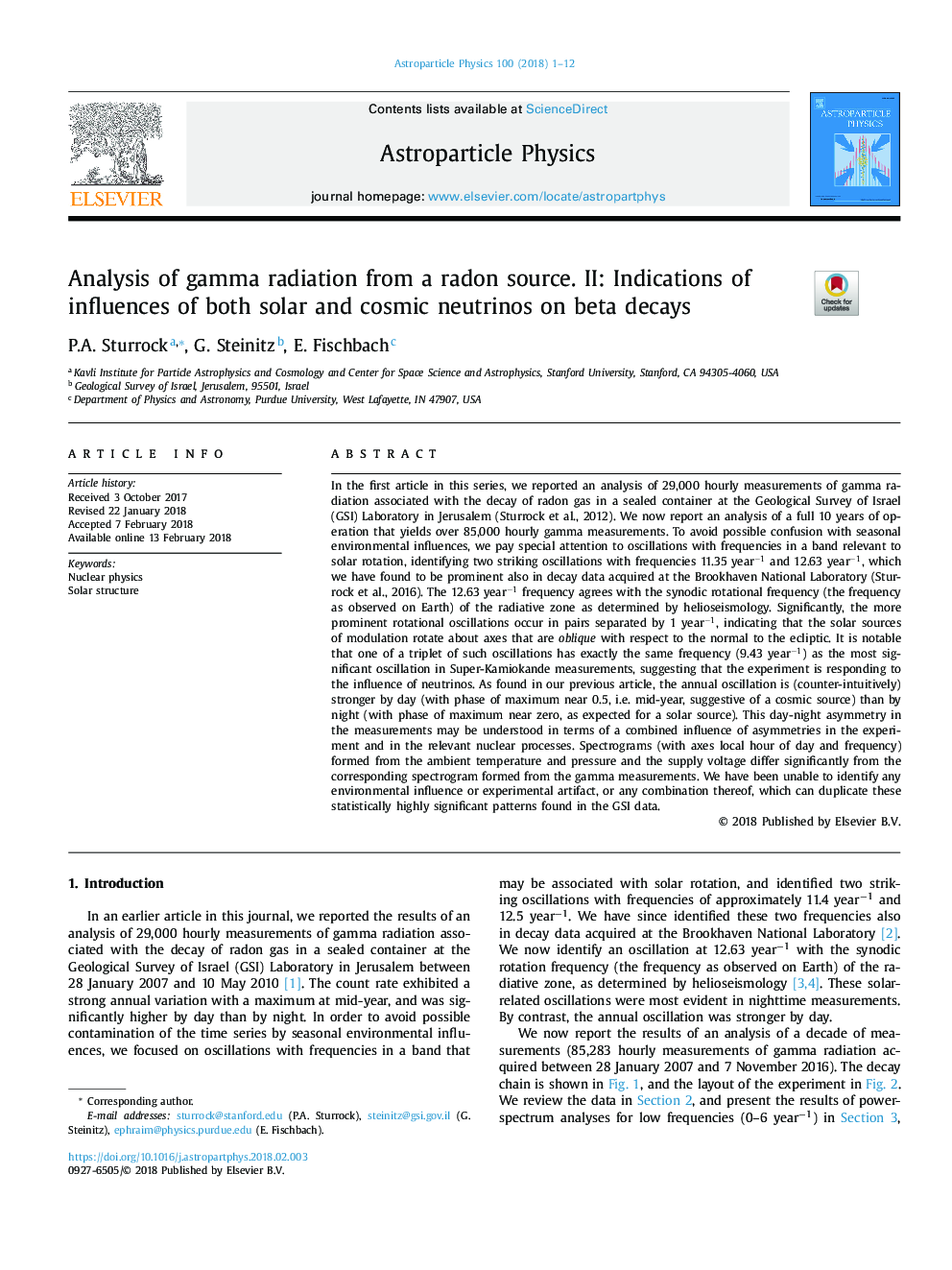| کد مقاله | کد نشریه | سال انتشار | مقاله انگلیسی | نسخه تمام متن |
|---|---|---|---|---|
| 8132693 | 1523326 | 2018 | 12 صفحه PDF | دانلود رایگان |
عنوان انگلیسی مقاله ISI
Analysis of gamma radiation from a radon source. II: Indications of influences of both solar and cosmic neutrinos on beta decays
دانلود مقاله + سفارش ترجمه
دانلود مقاله ISI انگلیسی
رایگان برای ایرانیان
کلمات کلیدی
موضوعات مرتبط
مهندسی و علوم پایه
فیزیک و نجوم
نجوم و فیزیک نجومی
پیش نمایش صفحه اول مقاله

چکیده انگلیسی
In the first article in this series, we reported an analysis of 29,000 hourly measurements of gamma radiation associated with the decay of radon gas in a sealed container at the Geological Survey of Israel (GSI) Laboratory in Jerusalem (Sturrock et al., 2012). We now report an analysis of a full 10 years of operation that yields over 85,000 hourly gamma measurements. To avoid possible confusion with seasonal environmental influences, we pay special attention to oscillations with frequencies in a band relevant to solar rotation, identifying two striking oscillations with frequencies 11.35 yearâ1 and 12.63 yearâ1, which we have found to be prominent also in decay data acquired at the Brookhaven National Laboratory (Sturrock et al., 2016). The 12.63 yearâ1 frequency agrees with the synodic rotational frequency (the frequency as observed on Earth) of the radiative zone as determined by helioseismology. Significantly, the more prominent rotational oscillations occur in pairs separated by 1 yearâ1, indicating that the solar sources of modulation rotate about axes that are oblique with respect to the normal to the ecliptic. It is notable that one of a triplet of such oscillations has exactly the same frequency (9.43 yearâ1) as the most significant oscillation in Super-Kamiokande measurements, suggesting that the experiment is responding to the influence of neutrinos. As found in our previous article, the annual oscillation is (counter-intuitively) stronger by day (with phase of maximum near 0.5, i.e. mid-year, suggestive of a cosmic source) than by night (with phase of maximum near zero, as expected for a solar source). This day-night asymmetry in the measurements may be understood in terms of a combined influence of asymmetries in the experiment and in the relevant nuclear processes. Spectrograms (with axes local hour of day and frequency) formed from the ambient temperature and pressure and the supply voltage differ significantly from the corresponding spectrogram formed from the gamma measurements. We have been unable to identify any environmental influence or experimental artifact, or any combination thereof, which can duplicate these statistically highly significant patterns found in the GSI data.
ناشر
Database: Elsevier - ScienceDirect (ساینس دایرکت)
Journal: Astroparticle Physics - Volume 100, July 2018, Pages 1-12
Journal: Astroparticle Physics - Volume 100, July 2018, Pages 1-12
نویسندگان
P.A. Sturrock, G. Steinitz, E. Fischbach,